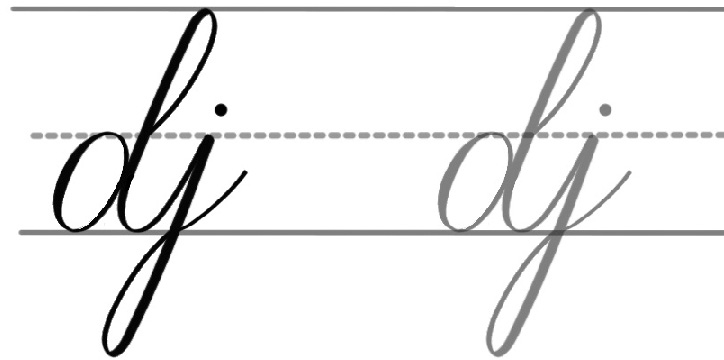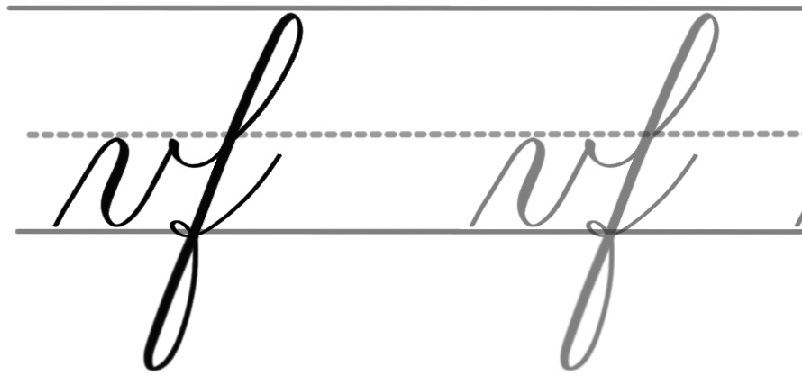Now that you understand how to form each letter, you will learn how to connect them to make words. Making connections between letters can be tricky. If you followed the guidelines as they were presented, then for many of the letters, connecting them is as simple as putting them next to each other. There are, of course, variations, so to break things down I have outlined a few strategies to help you. Take some time on these next few pages to practice making connections.
1. For the most part, the end of the first letter takes precedence over the beginning of the subsequent letter.
2. Here are some general rules for the letters that end in an underturn (a, d, h, i, l, m, n, r, t, x, u):

• If the subsequent letter starts with an oval/oval variant (a, c, d, e, g, o, q), simply place the that letter next to the end of the underturn.
• If the subsequent letter starts with an entrance stroke (b, f, h, i, j, k, l, p, t, u, w, y), the upstroke of the underturn on the first letter becomes the entrance stroke for the next letter. In other words, remove the entrance stroke of the second letter and place it next to the underturn of the first letter.

• If the subsequent letter does not fall into the previous two categories (m, n, r, s, v, x, z), the last upstroke of the underturn of the first letter merges into the beginning of the subsequent letter without lifting your pen.

3. For the letters that end in a “tail” (b, o, v, w):

• If the subsequent letter starts with an oval/oval variant (a, c, d, e, g, o, q), simply place the subsequent letter next to the end of the “tail.”
• If the subsequent letter starts with an entrance stroke (b, f, h, i, j, k, l, p, t, u, w, y), the end of the “tail” of the first letter becomes the entrance stroke for the subsequent letter. In other words, remove the entrance stroke of the subsequent letter and place it next to the tail of the first letter.

• If the subsequent letter does not fall into the previous two categories (m, n, r, s, v, x, z), the “tail” of the first letter takes precedence and merges into the beginning of the subsequent letter.
4. For the remaining letters (c, e, f, g, j, k, p, q, s, y, z) that end in an upstroke, the rules remain the same as those that end in an underturn, with one minor exception:

• If the upstroke of the first letter meets an ascending stem loop (b, f, h, k, l), extend the upstroke until it meets the waist line to create a more natural flow of your letters.

The following page contain a few more examples to practice connecting letters. As you practice, remember the first rule: the ending strokes of the first letter take precedence over the beginning of the subsequent letter. As always, remember to write slowly and lift your pen after each stroke.
